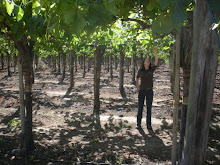“Good or weird?” I ask. More often than not, the answer is “good,” but I get my share of “weird” and more than a couple “weird, but good.”
This game of gastronomic roulette is made all the more exciting because I have the Outdoor Gourmet manufacturing facility at my disposal. If there is an apparatus made of wood that can be used in preparation of food, I can (and do) get a stack made up to go all Dr. Frankenstein on. So, here is a peak into the OG laboratories / test kitchens- the Baking Plank episode.
Baking Planks are basically just larger, thicker grilling planks- approximately 13” x 17” x 1.25”. I had several wood flavors made up- Cedar, Cherry, Alder, and Maple.
You could soak one of these baking planks and use it just like a heftier grilling plank, but I wanted this to be reusable, so I opted to cure one of the Alder Baking Planks.
How to cure your Baking Planks
(This is basically the same concept as seasoning a cast iron.)
You will need...- Baking Plank
- Vegetable Oil: I recommend safflower oil, grape seed oil, canola oil, or some other high
smoking-point oil. Do NOT use mineral oil, linseed oil, butter, lard, or bacon grease. Just don't.
- Wire Cooling Rack
- Broiler Pan
- Rag / Basting Brush
Directions1. Apply liberal amounts of oil over plank both sides, coating evenly and paying special attention to the ends. I suggest a "wax on, wax off" method. Let stand on cooling rack for 10 minutes, then give it one more coat, going with the wood grain.
2. Preheat oven to 300°, then place oiled plank on the broiler pan in oven and cook for 20 mins., then flip and cook for another 20 mins. Note: If you hear any snaps, crackles or pops, it's cool. That happens.
3. Remove from oven and allow to cool for 5 mins. Lightly coat with a bit more oil to seal. Now you have a reusable baking plank suitable for a "dry planking process."
Ok, now you have a baking plank. What to make?
Oven Planked Pitas and/or Pizza
Ingredients 3 cups flour
1 1/2 teaspoons salt
1 Tablespoon sugar or honey
1 packet yeast (or, if from bulk, 2 teaspoons yeast)
1 1/4 to 1 1/2 cups water, roughly at room temperature
2 tablespoons olive oil or vegetable oil
1. Activate yeast, then mix with flour, salt, and sugar. Add olive oil and 1 ¼ cup of water. Mix with a wooden spoon. If all the flour doesn’t stick, add a touch more water.
2. Place ball on work surface and knead and mix on low with dough hook for 10 minutes, then place in lightly oiled bowl and roll ball around to coat with oil. Cover bowl with plastic wrap or damp towel to rise until it has doubled in size (90-ish minutes). Once it has risen, punch it down, then roll into 8 pieces and cover for another 20 minutes.
3. Preheat oven to 400 degrees. Oil your baking plank and place on middle oven rack.
4. Sprinkle some flour on work surface and roll your dough balls out to rounds. They should be about 1/6 inch thick.
5. Open oven and place two or more pitas at a time on your plank and bake for 3 to 5 minutes, depending on how cooked / blistered you like your pitas. Note: Your pitas will puff up almost immediately. This is good, "we-don’t-have-a-TV"entertainment.
6. Remove from oven, cool, and enjoy with last week's Cedar Plank Roasted Garlic Hummus.
Or you could use pretty much any pizza dough recipe in the same way and top with your favorite sauce, cheese, and toppings.
For this round, I used fresh Mozzarella, Sage Monterey Jack, Grape Tomatoes, and Arugula topped with White Truffle Oil.
Welcome to your weekend. -KB















No comments:
Post a Comment